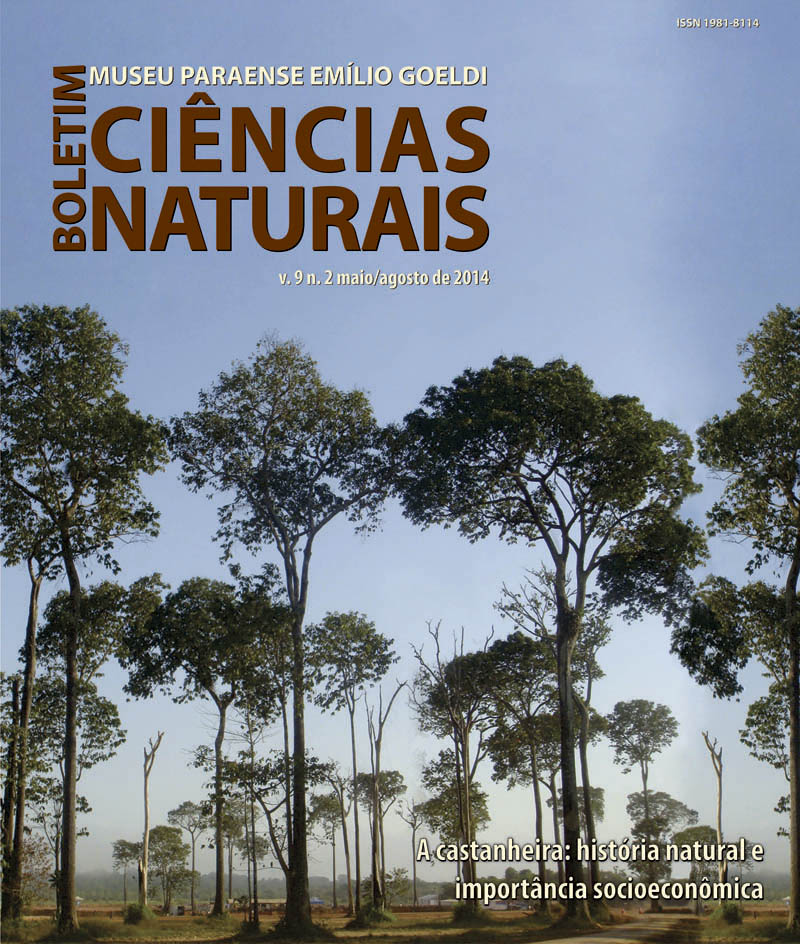‘Castanha na roça’: increasing yields and renewing Brazil nut stands through shifting cultivation in Amapá State, Brazil
DOI:
https://doi.org/10.46357/bcnaturais.v9i2.532Keywords:
Natural regeneration, Fallow, Brazil nut production, Amazon nut, Bertholletia excelsaAbstract
The aging of Brazil nut populations in mature forests may compromise the sustainability of production systems due to recruitment bottlenecks and the decreasing yield of older trees. Nevertheless, some studies show an increased potential for regeneration and growth of Brazil nuts in disturbed and regenerating forests areas. The aim of this study is to assess the greater regeneration potential outside mature forests, and present evidence for the productivity potential of early succession sites. We also discuss management options and the importance of this regeneration through a system named ‘castanha na roça’. A total of 1,442 trees were assessed on 91 slash-and-burn sites in RESEX Cajari, Amapá State. The density was 11 ind. ha-1 in slash-and-burn fallow total sites, against seven found in mature forest. In fallows areas, the diameter at breast height of the smallest productive tree (24.5 cm) was smaller than that found in the mature forest (38.5 cm), with 17% of productive trees and averaging 84 fruits per tree. The acknowledgement that slash-and-burn agriculture and Brazil nut gathering can be complimentary is key to supporting the sustainability of harvesting systems.
Downloads
Published
Issue
Section
License
Publication means fully assigning and transferring all copyrights of the manuscript to the journal. The Liability Statement and
Assignment of Copyrights will be enclosed with the notice of acceptance. All the authors must sign the document and return it to the journal.






